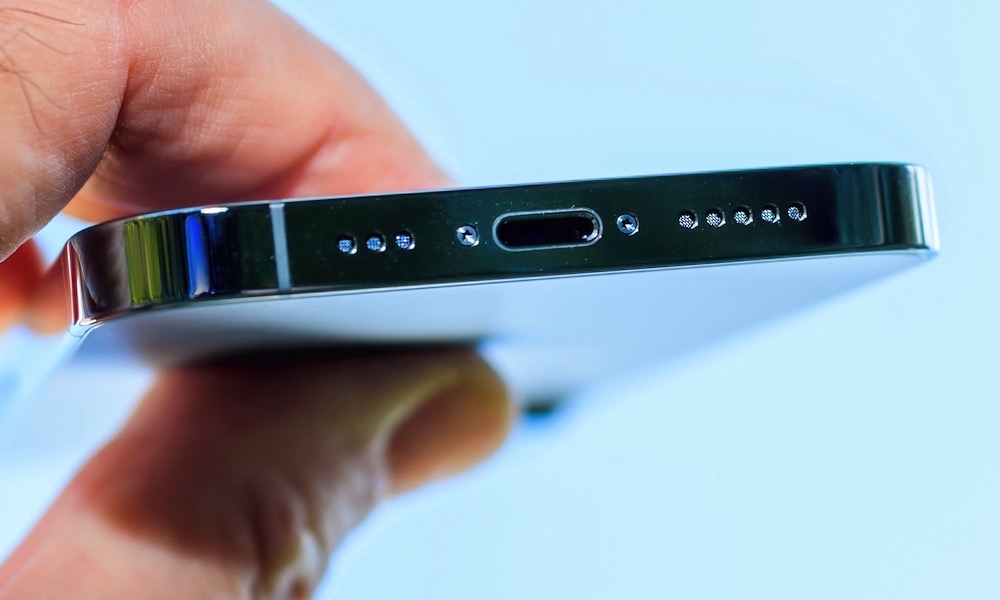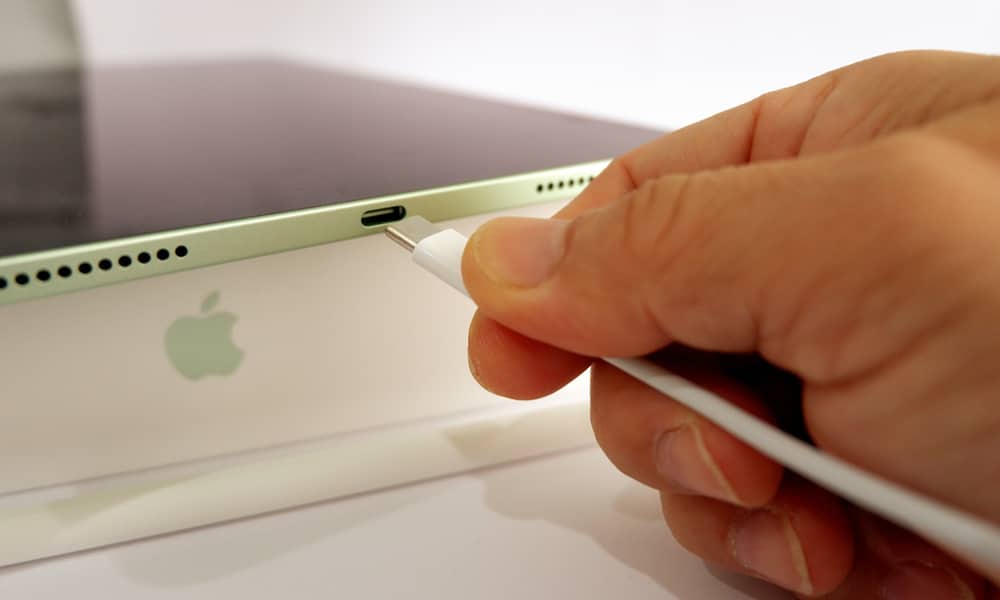Will Apple Give up Control of the iPhone 15’s USB-C Port?
 Credit: Hadrian / Shutterstock
Credit: Hadrian / Shutterstock
Toggle Dark Mode
With the EU forcing USB-C on the iPhone and U.S. regulators not far behind, this is likely to be the year that Apple finally ditches Lightning with the release of the iPhone 15 lineup.
Most analysts suggest that Apple will go all-in on USB-C by 2024, eliminating the Lightning port in its smaller accessories like AirPods and the MagSafe Duo. It also stands to reason that the Lighting port should soon disappear from Mac accessories like the Magic Keyboard and Magic Mouse, where it was even more starkly out-of-place among USB-C-equipped Macs.
Apple has already been moving steadily in this direction. The entire current iPad lineup now sports USB-C ports; although the 2021 entry-level iPad remains on sale as a reminder of the Lightning days, that’s almost certainly going to disappear by this fall.
This leaves the iPhone as the only mainstream Apple device that still uses the proprietary port. There’s a good reason that Apple has been holding out: it has much more control over the Lightning port and who can use it. However, the writing is on the wall, and the move to USB-C is now inevitable. The question is whether Apple will give up its control as it moves to a more open standard.
The Reluctant Move to USB-C
Since the beginning, Apple has used proprietary ports for its mobile devices. With only one exception, all of Apple’s traditional iPods used a 30-pin Dock Connector, which also became the standard for the iPhone until Apple replaced it with a newer and more compact Lightning port on the iPhone 5.
Either way, since Apple patented both ports, the company was able to exert quite a bit of control over who could use them. Accessory makers had to pay licensing fees to Apple to get access to the necessary components, which also included “authentication chips” to identify the accessories to the iPhone and ensure that they were being used in a way that Apple approved of.
It wasn’t until the 2018 iPad Pro came along that Apple decided it could lighten up on some of these restrictions where its tablets were concerned. However, the company’s hand was also indirectly forced by its customers; if it wanted to market its high-end iPad Pro to serious professionals, it needed to ensure it was compatible with the equipment that pros expected to use. A switch to USB-C opened the door to everything from digital cameras and external monitors to digital audio controllers and external storage devices.
Lightning’s Legacy May Remain
As a mobile device, iPhone owners don’t have nearly the same requirements for hooking up “pro” gear as iPad users. As a result, Apple has gotten away with sticking to its Lightning port for longer. Regulators are now forcing Apple to adopt USB-C for charging, but that doesn’t mean the company has to give up control of the other things the port can be used for.
In fact, Apple could comply with the letter of the new EU rules simply by adding an extra USB-C port for charging and keeping the Lightning port in place. It’s wildly implausible Apple would do anything that absurd, but the point is that the rules say nothing about ports used for data transfer; the goal is to ensure a common standard for charging to reduce e-waste and avoid forcing customers to buy new accessories every time they buy a different device.
According to a rumor making the rounds on Weibo and shared by MacRumors Apple may be planning to keep its authentication chip strategy in place even as it moves the physical port over to USB-C.
While this should be taken with a healthy dose of salt for now, it’s not that far-fetched, and the person sharing it claims to be an integrated circuit expert with 25 years of experience who has seen some of Apple’s plans for the chips that will drive its USB-C communications.
The lack of such a chip on Apple’s USB-C-equipped iPads casts some doubt on this, but as we mentioned earlier, the iPad is a different class of device that requires considerably more open-ended and laptop-like accessory support to succeed. Most folks aren’t interested in connecting external monitors or Thunderbolt storage arrays to an iPhone.
However, if Apple does indeed plan to go down this road, it will need to use a lighter touch on its restrictions. In the past, even charging accessories required an MFi chip to properly connect to the Lightning port, which would almost certainly raise the ire of regulators demanding a universal charging standard.
Locking down other types of accessories would be fair game, though, and it remains an open question as to how heavy-handed Apple may decide to be when it comes to things like headphones.
[The information provided in this article has NOT been confirmed by Apple and may be speculation. Provided details may not be factual. Take all rumors, tech or otherwise, with a grain of salt.]










